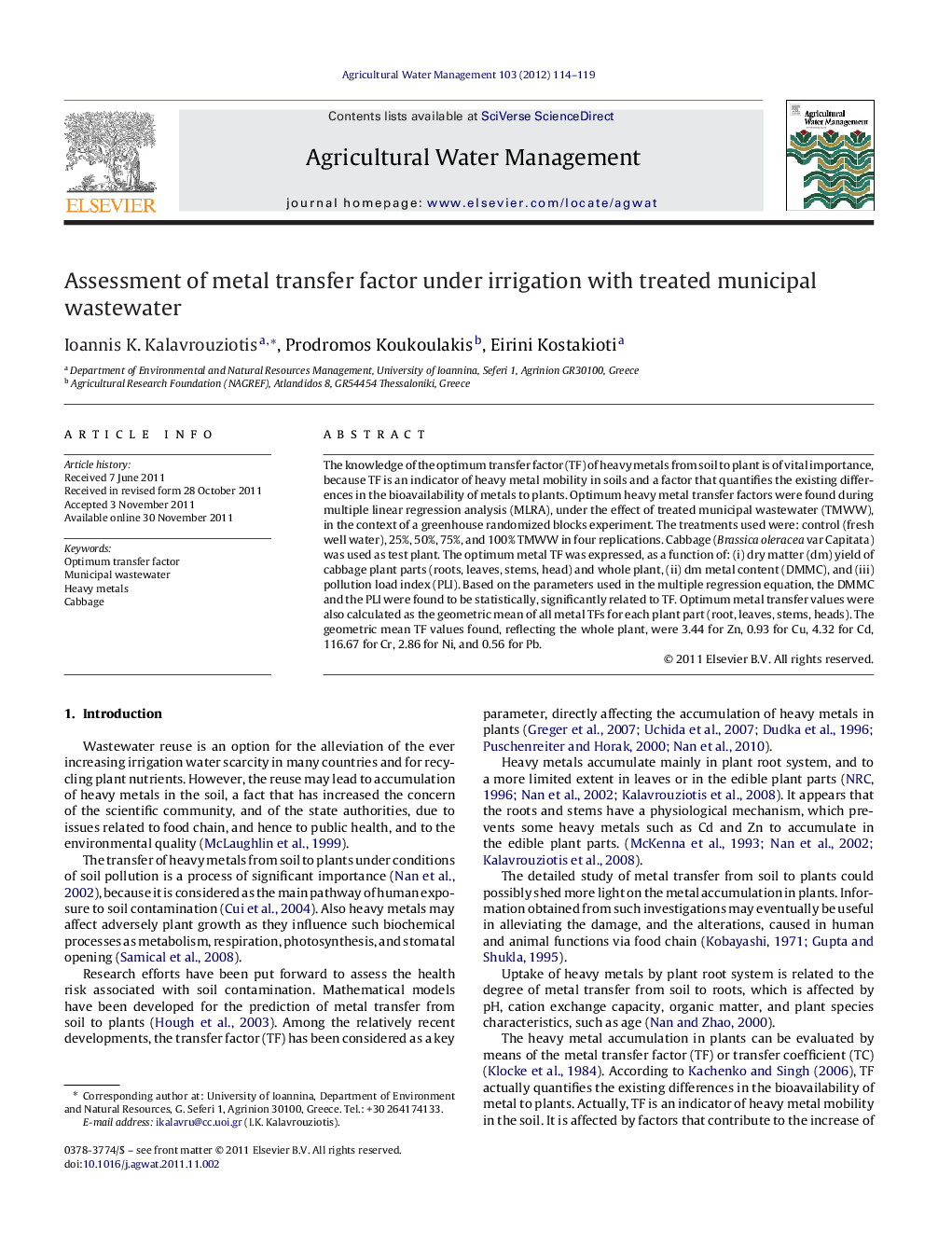| Article ID | Journal | Published Year | Pages | File Type |
|---|---|---|---|---|
| 4479223 | Agricultural Water Management | 2012 | 6 Pages |
The knowledge of the optimum transfer factor (TF) of heavy metals from soil to plant is of vital importance, because TF is an indicator of heavy metal mobility in soils and a factor that quantifies the existing differences in the bioavailability of metals to plants. Optimum heavy metal transfer factors were found during multiple linear regression analysis (MLRA), under the effect of treated municipal wastewater (TMWW), in the context of a greenhouse randomized blocks experiment. The treatments used were: control (fresh well water), 25%, 50%, 75%, and 100% TMWW in four replications. Cabbage (Brassica oleracea var Capitata) was used as test plant. The optimum metal TF was expressed, as a function of: (i) dry matter (dm) yield of cabbage plant parts (roots, leaves, stems, head) and whole plant, (ii) dm metal content (DMMC), and (iii) pollution load index (PLI). Based on the parameters used in the multiple regression equation, the DMMC and the PLI were found to be statistically, significantly related to TF. Optimum metal transfer values were also calculated as the geometric mean of all metal TFs for each plant part (root, leaves, stems, heads). The geometric mean TF values found, reflecting the whole plant, were 3.44 for Zn, 0.93 for Cu, 4.32 for Cd, 116.67 for Cr, 2.86 for Ni, and 0.56 for Pb.
► Optimum metal transfer factor (TF) was calculated by multiple regression analysis. ► Optimum TFs of plant parts were linearly correlated with those of whole plant. ► The TFs of roots, leaves, and heads of cabbage were approximately similar to those of the whole plant.
